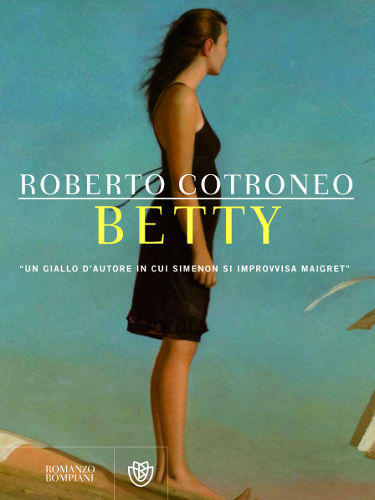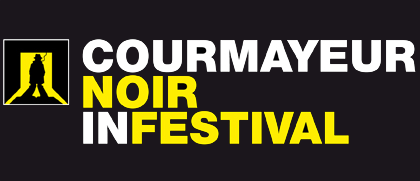EDITORIALS
NEWS
PROGRAM
FILMS
WRITERS
Scerbanenco
Conversations
Chandler Award
EVENTS
HONORARY AWARDS
GALLERY
NEWS
PROGRAM
FILMS
WRITERS
Scerbanenco
Conversations
Chandler Award
EVENTS
HONORARY AWARDS
GALLERY
Betty
PHOTOGALLERY HIGH RES
In 1960 George Simenon published the novel Betty, a story he wrote in seven days about "Elisabeth Etamble, née Fayet; 28; profession: housewife; residence: Paris." Roberto Cotroneo’s Betty is set in 1987. Simenon is sick, he returns to the Côte d'Azur, to Porquerolles, his perfect island, with a photographer in tow, Marc, who uses his Leica to peer into the souls, in black and white, of the local residents. A beautiful young woman shows up in Porquerolles. She too is called Betty, like Simenon’s character. She is found dead, by drowning. Simenon turns into Maigret, and starts an investigation that will inspire him to write the story of a woman who represents desire, passion and guilt. A woman who reminds him of the terrible pain caused by the suicide of his 20-year-old daughter Marie-Jo, in 1978. The book begins with the fictional discovery of a manuscript by Simenon and, says the author, "I wanted to write as if I were Simenon, I didn’t want to tell the story from a different point of view. I was interested in his way of thinking. The original title was La donna del faro [literally, 'The Woman of the Lighthouse'], but the temptation to use my main character’s name was very strong. I love writing about real people, and did so in my last two books; the protagonist of the last one was the great jazz trumpet player Chet Baker. I like to mix fiction, reality and truth. Betty is a novel about losers, about people who in one way or another didn’t make it. But it’s also a novel about people who are losers on the inside. On paper, Simenon was a rich and famous man, very widely read and esteemed by the public. Winning or losing in life means something more profound, more subtle, more imperceptible than what we normally think."
Writer-journalist Roberto Cotroneo has published numerous novels and essays as well as a book of poetry. He has written for years for L’Espresso, including a column of literary criticism entitled "All'Indice." From February 1988 to the end of 1989 he wrote reviews for the Sunday pages of Il Sole 24 Ore, edited by Armando Torno, under the pseudonym Mamurio Lancillotto. He runs the Scuola Superiore di Giornalismo della Luiss in Rome, the Luiss Writing School, the Luiss Master of Art and the Luiss Master of Music. He writes a weekly column for "Sette" for Il Corriere della Sera entitled Blowin' in the Web, and is the literary critic for Il Messaggero. He has an official site and a blog at robertocotroneo.me. Cotroneo says there’s his writing hats are different, however: "Writing for newspapers and writing novels is not at all the same thing. I have two different ways of writing, with different timetables and objectives. Obviously, however, working for many years at a newspaper like L’Espresso, I’ve had the fortune of staying close to culture and literature. But there is no connection between the two jobs."
Betty, Bompiani, Milano, 2013
Tweet di un discorso amoroso, Barbera, Siena, 2013
I demoni di Otranto, Metamorfosi, Milano, 2012
E nemmeno un rimpianto: il segreto di Chet Baker, Mondadori, Milano, 2011
Adagio infinito e altri racconti sospesi, Aliberti, Milano, 2009
Manuale di scrittura creativa, Castelvecchi editore, Roma, 2008
Il vento dell'odio, Mondadori, Milano, 2008
Questo amore, Mondadori, Milano, 2006
Chiedimi chi erano i Beatles: lettera a mio figlio sull'amore per la musica, Mondadori, Milano, 2003
Per un attimo immenso ho dimenticato il mio nome, Mondadori, Milano, 2002
L'età perfetta, Rizzoli, Milano, 1999
Otranto, Mondadori, Milano, 1997
Presto con fuoco, Mondadori, Milano, 1995
Se una mattina d'estate un bambino, Frassinelli, Milano, 1994
PHOTOGALLERY HIGH RES
 |
|
|
PROGRAM
12/12/2013 h 11:00: Jardin de l'Ange Presented by Sebastiano Triulzi
|

